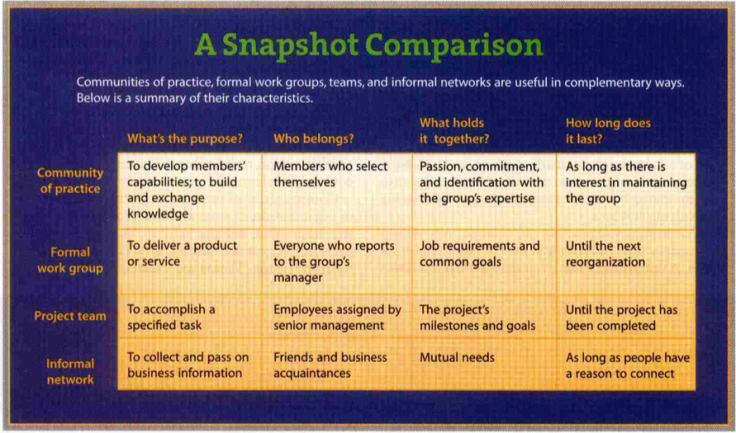Finally, here are my thoughts on key learning points and possible next steps. I will not highlight points for each course topic, but will instead try to distil the top three lessons for me in terms of what I have learnt about learning–and learnt about leadership.
First, to me it was a genuine insight that education is about more than learning. We have become so fixated on learning: on the idea that whatever we do as academic teachers, it needs to result in learning. Of course, I would not at all deny that learning is a crucially important component of education, but all this talk of learning–to the extent that we are no longer supposed to talk about teaching but have to add learning (‘teaching and learning’ or even, increasingly, in reverse order: ‘learning and teaching’)–deflects attention from other important dimensions of education: what Biesta (2015) calls “socialisation” and “subjectification”.
Of course education–and higher education–is about learning, but it is also about values, developing as an individual, and becoming a responsible member of society. The emphasis on learning, evidence-based approaches, qualifications, and teaching excellence tend to focus attention on one dimension only–quality–at the expense of the others, in particular values and norms. Moreover, unwittingly it also tends to privilege learning outcomes over learning process: not just what one learns, but the enriching process itself should, however, matter. The initial course readings, though I found them a bit disappointing in some ways, nevertheless very effectively set the stage for the ONL171 learning journey by getting us to reflect not only on learning, but on PBL and–more broadly and deeply–about education.
Lesson 1: learning is crucial to (higher) education, but it is about more than learning outcomes, and it is about more than learning.
Second, when I think about the learning process in ONL171, a key lesson for me is the importance of the teaching approach taken–and how this connects with teaching as itself a form of leadership.
Obviously I knew beforehand just how significant one’s approach as a teacher is. But boy, does it make a difference! Like most of my peers in PBL Group 1, I really did feel lost for the first weeks. And I craved more direction from our PBL facilitators. But it all started coming together over time, as the group tentatively and then more securely started connecting. To me, the leadership that Lars and Beata provided exemplified the recommended approach sketched by Hannah and Lester (2009, p.35) for leading a learning organisation from a multi-level perspective: leaders should “set the conditions to maximize the emergence of knowledge creation and diffusion, while limiting leader intrusion into the actual creative processes”. In other words, they should proceed by “setting the conditions for knowledge emergence, [while] yet allowing the creative process to self-organize”.
This can be painful, and was in my own case and that of our PBL group as we were not always able to notice the “conditions” that Lars and Beata had earlier set and felt as though we were floundering. But as they say, less can be more–and I can see this being true in the case of leadership. The lesson is: provide the conditions for creativity, the scaffolding (frameworks, communication tools, schedules, readings, and so on) to support the members of the organisation–in this case, of PBL Group 1–and then trust these members to “self-organize” and be / become creative. And: it worked!
Lesson 2: leaders, in particular in knowledge-intensive learning organisations such as universities, need to create the conditions for creativity, which involves focusing less on what people should do and more on how to set up the conditions for creativity–and then, as leaders we need to trust people.
A third important point relates to the importance of community for learning. Once again, of course I was aware of this point before taking the course, but the experience was valuable in making quite concrete what can be abstract theory. While I was familiar with Wenger’s work on communities of practice, and have found it useful for thinking about academic development, the community of inquiry framework was new to me though I had heard colleagues, in particular Alan Soong and Jeanette Choy, talk about it before. The notions of social, cognitive and teaching presence seem really useful for thinking about ways of supporting online and blended learning, and of course the idea of openness and sharing is fundamentally important for growing practice. Paying attention to these dimensions, as indeed our facilitators in ONL171 did, and using open resources such as blogs to aid reflection and develop online portfolios, could help us in the NUS Centre for Development of Teaching and Learning as we refine not only our support for blended learning, but also more generally for early-career (and other) academics who are learning about teaching.
Lesson 3: pay attention to models of community that can provide concrete ways forward to collaborate with academics who are developing and enhancing their practice.
Next steps:
- As an academic development unit, our Centre will reflect on our collective OL171 experience: 7 of us participated in the course!
- We hope to provide feedback to the course leaders on our experience.
- We would like to explore the possibility of continuing the connection with ONL.
- We will plan to implement some of the good ideas from this course to our own context.
I would like to thank Lotta Åbjörnsson in particular for the invitation extended to me and my colleagues to join this course: it’s been a challenging and enlightening experience!
References
Biesta, G. (2015). What is education for? On good education, teacher judgment, and educational professionalism. European Journal of Education, 50(1), 75-87.
Hannah, S. T. & Lester, P. B. (2009). A multilevel approach to building and leading learning organizations. The Leadership Quarterly, 20(1), 34-48.
